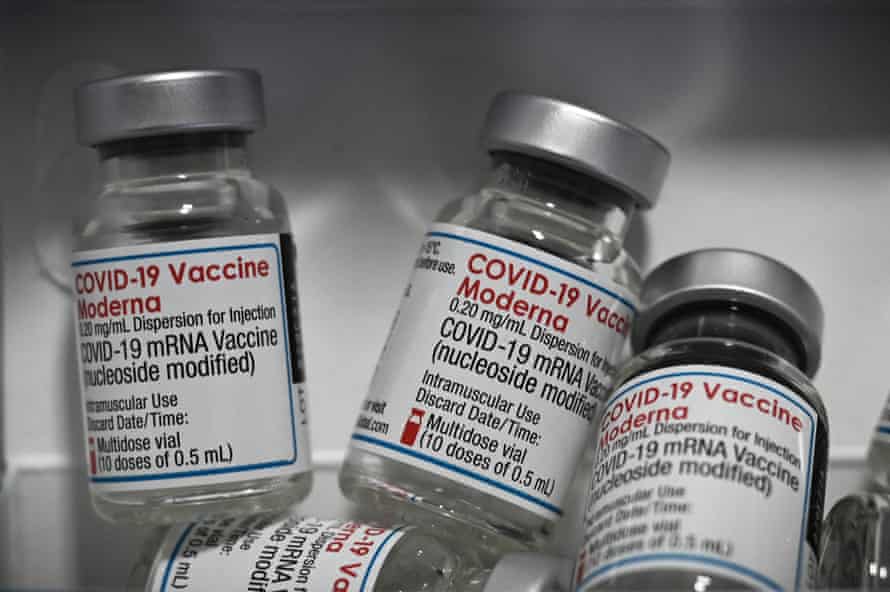Moderna co-founder Robert Langer: ‘I wanted to use my chemical engineering to
The chemical engineer Robert Langer co-founded Covid-19 vaccine maker Moderna, and his innovations have helped create more than 100 products from artificial skin to messenger RNA (mRNA) vaccines. The 73-year-old has a mountain of research papers and patents to his name, on top of which he has started more than 40 companies and won more than 200 awards, including the Queen Elizabeth prize, which has been called the “Nobel for engineering”. Langer’s biomedical engineering lab at the Massachusetts Institute of Technology, where he holds a professorship, employs more than 100 researchers. He spoke to the Observer to mark Unesco World Engineering Day for Sustainable Development, held earlier this month.
Last year you debuted on Forbes magazine’s billionaires list. Being a co-founder of Moderna has been profitable! How did it feel?
It’s embarrassing. Everybody sees it. I have never sold a Moderna share, so it’s not like I’m spending the money. But I never did any of this to get rich. I’ve never sought high paying jobs. All my life I’ve looked for things that I felt would make a difference.
Did you think Moderna would be successful when you established it in 2010?
The platform – mRNA-based medicines delivered to the body via nanoparticles – had revolutionary potential and, because of my work on the drug delivery of large molecules, I thought we could do it, even if others doubted. I remember telling my wife that I thought Moderna would be the most successful biotech company in history! Of course, the Covid-19 vaccine accelerated the company’s success, but we were only able to make it because of all the underlying technology we had already developed.

You grew up in Albany, New York. Your dad ran a small liquor store and your mum took care of you and your sister. How did you get into chemical engineering?
My parents bought me Gilbert hobby sets, including a chemistry one. I set up a little lab in our basement mixing chemicals and making the colours change and I loved it. In high school, though I liked chemistry, math was the only subject I did well in. I was advised to do engineering at college, and I listened. I did terribly in my first year at Cornell except in chemistry, so I decided I had better major in chemical engineering.
You did your PhD in chemical engineering at MIT but you didn’t follow your classmates into high paying jobs in the oil industry…
I had decided I wanted to use my chemical engineering to help people and so I declined the job offers. After many unanswered letters, I got a postdoctoral position doing cancer research. It was in the lab of Judah Folkman, a professor and surgeon at Boston children’s hospital, known for his unusual hires. It changed my life. I was the only engineer in the whole hospital. I started to think about how materials got into medicine. Doctors would use ladies’ girdle material for the basis of an artificial heart, and mattress stuffing for the basis of a breast implant. I thought: why not instead design the material you wanted from first principles.
Both Moderna and Pfizer’s Covid-19 vaccines are different to previous vaccines: they insert mRNA to teach our cells how to make a protein that triggers an immune response. What was your specific contribution to the technology?
Being the first person to deliver nucleic acids like RNA and DNA to the body via tiny particles. Folkman had the idea that if you could stop blood vessel formation inside a tumour, that might be a new way to treat cancer. But to solve the problem we had to deliver large molecules to the body. Nobody before us had done that and we were told it was impossible: the molecules were too big to travel through any capsule or particle and too fragile to be placed inside them. But I made tiny particles – polymer capsules – that could deliver just about any protein or nucleic acid for a sustained period. We published the findings in 1976.
People were sceptical at first – I couldn’t get grants or a position in an engineering department – but over time, scientists’ thinking changed: perhaps you could make other types of tiny particles and deliver other macromolecules [the Covid-19 mRNA vaccines use lipid nanoparticles for delivery]. The first blood vessel inhibitor to treat cancer, Avastin, was launched in 2004 by Genentech in part using techniques started in Folkman’s lab.
Where else is drug delivery technology that you pioneered being used today?
Lots of people have built on the work we started, coming up with different applications and improvements. Today injectable microparticles are used to treat mental health diseases such as schizophrenia and opioid addiction as well as type 2 diabetes and pain. Our work has been critical for drug-eluting stents. Nanoparticles are also…
Read More: Moderna co-founder Robert Langer: ‘I wanted to use my chemical engineering to

